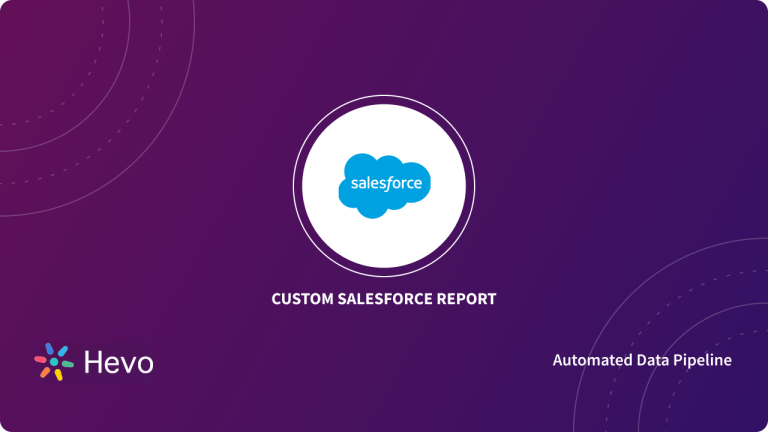Salesforce is a robust Customer Relationship Management (CRM) platform that allows you to gain a holistic understanding of your customers and potential prospects with ease. Using its intuitive features, you can keep track of your customer’s entire journey from the very beginning. On the other hand, Drupal is a robust Content Management Platform (CMS) that emphasizes simplifying your content workflows. Backed by its Open-Source structure, it even provides you with a great deal of flexibility.
Setting up the Drupal Salesforce Integration can help you leverage Drupal’s intuitive CMS platform to build targeted content based on the insights you garner from your Salesforce CRM. As a result, you can better understand your customers, communicate and develop stronger relationships through well-thought-out content pieces and conversations.
This article will provide you with an in-depth understanding of how to set up your Drupal Salesforce Integration effortlessly in just six easy steps. It will also help you gain a holistic understanding of what Salesforce and Drupal are all about, along with some key features of each of them! Read along to find out more.
Table of Contents
Prerequisites
- A Salesforce Developer account.
- Drupal Salesforce module.
- A Drupal-based website.
Introduction to Drupal
Drupal is a community-driven, Open-source Content Management System (CMS). Millions of people and organizations use it to create and maintain their websites all around the world. Major corporations and government organizations, like the Government of Australia, Red Cross, Harvard, The Economist, BBC, NBC News, Whole Foods, Cisco, Twitter, and many others, utilize Drupal without even realizing it.
Drupal is free software distributed under the GNU General Public License. This means it has intrinsic advantages over proprietary software in terms of Cost, Flexibility, Freedom, Security, and Responsibility. Drupal, for example, can be modified and extended by anyone. This prevents “Vendor lock-in” and allows users all over the world to monitor Drupal’s underlying code for compliance and security vulnerabilities and immediately resolve them.
It has a user interface that makes it simple to generate and publish content. With fully customizable forms, the platform can accept a limitless number of content kinds, including text and media. With powerful yet simple-to-use capabilities, it dynamically retrieves, filters, and shows this content.
Intuitive content creation tools and sophisticated in-place editing capabilities are also available. Drupal’s complex user role classification and permissions mechanism restrict access to information and functionality.
Key Features of Drupal
Here are some of the amazing features Drupal has to offer:
- Community: Drupal’s Open-source model ensures continual improvement and innovation by leveraging the Drupal community’s support and enthusiasm.
- User Experience: Drupal has emphasized User Experience (UX) in recent editions to enable everyone from website editors to content developers to create compelling consumer experiences.
- Scalability: Drupal’s adaptable API architecture allows for rapid content expansion across a worldwide multisite ecosystem.
- Security: The Drupal Security Team is made up of security specialists from all over the world who are dedicated to investigating and discovering potential vulnerabilities in Drupal.
- Accessibility: It is a crucial challenge for verticals such as higher education, which are responsible for offering chances and knowledge to students from a variety of backgrounds.
Introduction to Salesforce
Prior to Salesforce, businesses had to run CRM systems on their own servers. As a result, they had to invest a significant amount of money and time in developing their own CRM. Things began to change, though, with the introduction of Salesforce.
Salesforce offers CRM solutions across a variety of industries and teams, including Sales, Marketing, and a variety of other areas, that can be set up fast and without requiring a deep understanding of the technology.
Salesforce helps businesses achieve a variety of CRM-based customer-centric objectives by automating a substantial percentage of their Marketing efforts and increasing Sales. Salesforce allows users to collect and track client information as well as purchasing patterns. It also provides Email Integration Services and assists in the development of Sales Forecast Reports. Users can also construct Customized Apps that are tailored to the company’s needs using the Salesforce Application.
Key Features of Salesforce
Here are some of the amazing features Salesforce has in store for users:
- Easy Setup: Unlike other CRMs, which can take up to a year to set up and deploy, Salesforce can be set up in only a few weeks from scratch.
- User-Friendly Interface: Salesforce’s User Interface and functionality are simple to grasp, therefore no training is required to get started with it.
- Easy Customization: It allows businesses to tailor them to their own needs.
- Dynamic Dashboards: They provide a comprehensive picture of how well your organization is performing based on key parameters such as Market Trends and Customer Behavior. It also makes creating dashboards and real-time reporting a breeze.
- Many Ads: On a single Salesforce platform, businesses can even run multiple Ad Campaigns. They could even employ real-time analysis to get a better understanding of these projects.
- Better Collaboration: Salesforce’s collaboration capabilities allow people from different teams to engage in real-time.
With Hevo, you can seamlessly integrate data from Salesforce into any data warehouse, ensuring your organization has a unified view of its data assets.
Why Use Hevo for Data Warehouse Integration?
- No-Code Platform: With Hevo’s user-friendly interface, you can easily set up and manage your data pipeline without any technical expertise.
- Broad Source and Destination Support: Connect to over 150+ sources including salesforce, databases, and more, and load data into your preferred data warehouse.
- Real-Time Data Sync: Keep your data warehouse up-to-date with real-time data flow, ensuring your analytics are always based on the latest information.
Steps to Set up Drupal Salesforce Integration
The Drupal Salesforce Integration, however, encompasses several aspects, necessitating not just a single module, but an entire suite of modules – the Salesforce Suite. For D7, D8, and D9, this complicated tool is accessible. The module’s maintainers continue to actively work on improvements and upgrades, resulting in the introduction of a new 5. x branch this year.
Here are the simple steps to get started with your Drupal Salesforce Integration:
- Step 1: Download the Salesforce Module
- Step 2: Logging into Salesforce
- Step 3: Create a New Salesforce Connected Application
- Step 4: Set up your JWT OAuth Provider in Drupal
- Step 5: Build Mappings for Drupal Salesforce Integration
Step 1: Download the Salesforce Module
First, install the Salesforce Suite module on your Drupal site. You can do this by executing the following composer-based line of code:
composer require drupal/salesforceYou now need to activate salesforce_mapping. To stream data from Drupal to Salesforce, enable “salesforce_push“. To get data from Salesforce into Drupal, enable “salesforce_pull”. You’ll be able to find these while selecting the submodules you’ll like to install.
Step 2: Logging into Salesforce
Now, log in to your Salesforce account. In case, you don’t already have an account, you can click here to sign up and create your Salesforce Developer account with ease!
Step 3: Create a New Salesforce Connected Application
To create your new Salesforce Connected App, you can navigate in your application as follows:
Setup > Create > AppsYou now need to create your Oauth-based JWT connected app. To do so, you’ll first have to extract your key, along with the certificate. Once you’ve done this, you now need to configure the OAuth settings. You can do that as follows:
- Activate the OAuth settings. You can select the “Enable OAuth Settings” checkbox for this.
- Now, Set the callback URL to https://salesforce/oauth callback/yourhostname> (Note that Salesforce does not allow HTTP URLs, so your website must support HTTPS unless it uses localhost).
- Depending on your app’s demands, grant “Offline” as well as “Full” or “API” access.
- Take note of your Consumer Key and Secret Key as you save the app.
Step 4: Set up your JWT OAuth Provider in Drupal
To begin configuring OAuth Provider, on your Drupal Admin Dashboard, go to Admin > Config > Salesforce > Auth.
To finish setting up your Drupal Salesforce Integration, you now need to provide the Secret and Consumer Key. You can add these into the form and click on enter.
Now, to start streaming data between the two platforms, all you need to do is create your data mappings. You can do this to finalise your Drupal Salesforce Integration in the next step:
Step 5: Build Mappings for Drupal Salesforce Integration
Create mappings by going to Admin > Structure > Salesforce > Mappings (https://your hostname>/admin/structure/salesforce/mappings). This will allow you to link your Drupal Fields with Salesforce Fields with ease.
In just 5 simple steps, your Drupal Salesforce Integration is done!
Conclusion
This article demonstrated how you can set up Drupal Salesforce Integration and why you need to integrate your Content Management application with a CRM tool to take a holistic approach to build customer relationships. It also provided you with an in-depth understanding of both platforms, along with a detailed list of features these platforms have in store for you.
You might wish to take your business growth a step further after learning about the Drupal Salesforce Integration by employing Data Analytics techniques on your Salesforce data. This will necessitate the deployment of different complex ETL techniques to transfer data from Salesforce to a Data Warehouse.
Extracting complex data from Drupal, Salesforce and numerous other platforms can be challenging & require immense engineering bandwidth, and this is where Hevo saves the day!
Hevo Data allows you to transfer data from 100+ data sources like Salesforce (for free) to Cloud-based Data Warehouses like Snowflake, Google BigQuery, Amazon Redshift, Firebolt, etc. It will provide you with a hassle-free experience and make your work life much easier.
Frequently Asked Questions
1. Does Drupal integrate with Salesforce?
Yes, Drupal can integrate with Salesforce.
2. What are types of integration in Salesforce?
a) Data Integration
b) Process Integration
c) User Interface (UI) Integration
d) Event-Driven Integration
3. Does Salesforce have API integration?
Yes, Salesforce supports robust API integration, allowing external systems to interact with Salesforce data and functionality.










